佐藤 晃
Akira Sato
Staying Close to Fencers to Provide Total Care
Conditioning to Support the Strongest Group of Craftspeople
October 14, 2021
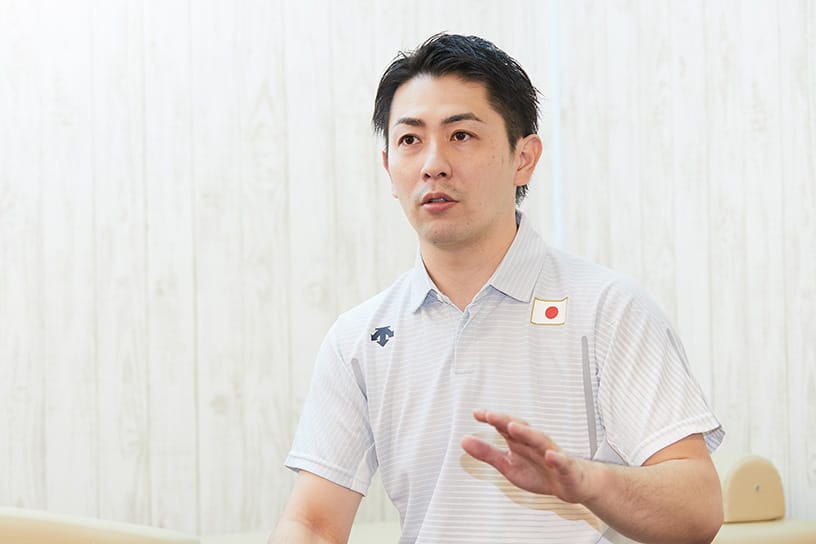
Photos: Asako Toda
A Connection Founded on the Desire to Learn at the Top

- ITO: When did you start working as a trainer?
-
Sato: I really got started in 2014 when I started seeing young junior high school age athletes in the Strength and Conditioning Department at the Japanese Fencing Federation. Before that, I’d worked as a student trainer for the Hosei University Fencing Club under Mamoru Ito, the club director, and my former teacher at Ryotokuji University, Naoyo Kamioka. When I was a graduate student at Waseda University, I worked as a teaching assistant at the university’s Sport Medicine and Science Clinic.
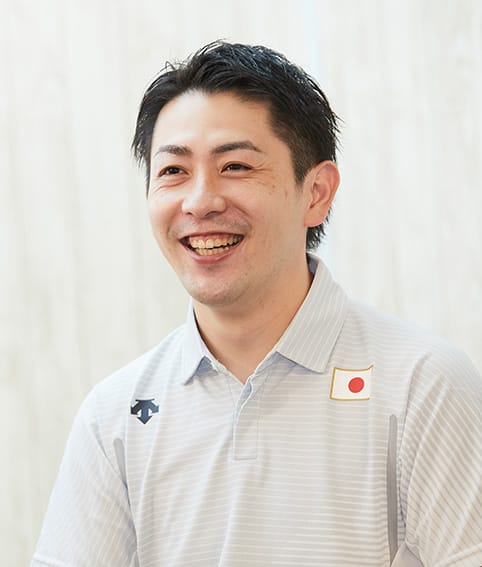
- ITO: So you’ve been involved in fencing since you were a student.
-
Sato: When I started working as a student trainer, I had several choices, but fencing was the one where I could see top-level athletes. I started out wanting to learn at the top of the field. I’m so grateful this has led me to where I am today.
- ITO: Since 2019, you’ve been accompanying the Japanese National Fencing Team as the exclusive trainer for men’s épée. How much trainer work do you do per year?
-
Sato: I feel like I’ve spent almost all my time supporting fencing. We have close to ten competitions each year around the world. I also organize training camps and coordinate schedules. The head coach of the Japanese national team, Mr. Oleksandr Gorbachuk, is from Ukraine, so we often have training camps in Ukraine. Japanese fencers have been getting stronger in the Ukrainian style, so it makes sense to cross swords with Ukrainian fencers. The fencers get along very well.
- ITO: So you spend a lot of time with them.
-
Sato: We’re like a family. I’ve been with them for a long time, so I know when a fencer isn’t mentally ready. When you work alone as an exclusive trainer, you’re expected to be a jack-of-all-trades and a general contact person. I can’t do everything, but I do try to listen to the fencers and give them advice on their problems. In that way I provide support that goes beyond just physical care.
Introducing Physiotherapy Devices Based on My Own Experience
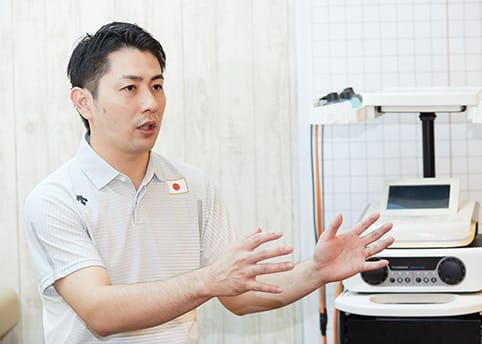
- ITO: How long have you been using physiotherapy devices?
-
Sato: I first came across physiotherapy at the Sato Osteopathic Clinic run by my father at my parents’ home in Sendai. The clinic opened in 1989. Local residents and athletes in Sendai still visit. I remember physiotherapy devices from the earliest days of the clinic.
I used to play baseball and often hurt my elbows and shoulders. I remember receiving ultrasound therapy and high-voltage therapy for these injuries. From my experience at that time, I felt therapeutic devices helped speed recovery. So when I opened the Oaks Acupuncture and Osteopathy Clinic in 2016, I decided to incorporate physiotherapy devices.
- ITO: So you’ve been receiving treatment with physiotherapy devices since you were a child. Did your father’s influence help lead you to becoming a therapist?
-
Sato: My father was certainly a big influence. All the athletes and local people who come to my family’s osteopathic clinic leave with a smile on their face. When I saw that, it struck me as a wonderful job. It filled me with admiration. It was an appealing world for a child. By the fourth grade, I’d already decided to go into this field.
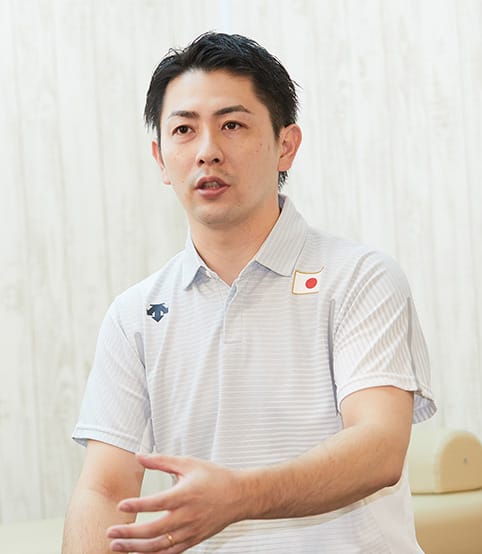
- ITO: So your childhood dream has come true.
-
Sato: No. I still have a long way to go. I see top athletes as a group of craftspeople who’ve mastered their craft. Of course, to treat such athletes, we therapists must also be craftspeople. So I’m always trying to be a craftsperson worthy of the name.
Fencing in particular is scored using electric judging equipment. The tools (swords) used are always carefully maintained on a daily basis. In this respect, I often feel that each fencer is a craftsperson, or at least a craftsperson-like figure.
For this reason, I also try to keep the sensations in my fingertips in order, and I try to be in a good mental state when administering treatment. But I don’t feel I’m even half a craftsperson yet. I don’t really consider myself to be a fantastic healer. I’m still in the process of training. I want to experience the spirit and skills of craftspeople, whatever field they work in, and hone my own mind to become a true craftsperson.
High-Voltage Glove Therapy for Acute Symptoms
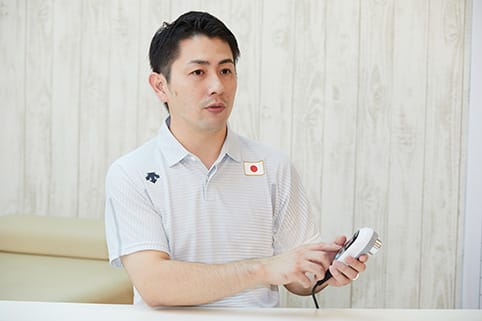
- ITO: What are the benefits of physiotherapy from the perspective of a specialist in treating athletes?
-
Sato: The greatest benefit is that physiotherapy devices can treat areas beyond the reach of human hands. Another advantage is that I can shorten treatment times compared to using just manual techniques.
Lots of physiotherapy devices are available today. In the current environment, I believe therapists can deploy lots of the “weapons” they need. The human hand itself isn’t evolving at all, but physiotherapy devices are evolving rapidly. Over the next five years, we’ll see the introduction of new and unprecedented products. I think we need to adapt to the expanding scope of treatment and the speed of its evolution.
- ITO: Do you use manual or physiotherapy first in your treatment?
-
Sato: I tend to do physiotherapy first. But I don’t just choose and say, “Let’s do physiotherapy for now.” Instead, with a clear treatment goal, like pain relief or relaxing muscle tension, I use the physiotherapy appropriate for the goal first, then make adjustments by hand.
Whether it’s ultrasound or electrical stimulation, the treatment is inevitably administered through probes and electrodes. That’s the drawback of physiotherapy. I feel it’s a risk. So I always try to finish the treatment with my own hands.
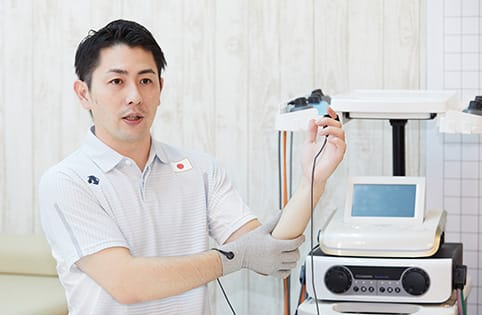
- ITO: How do you apply physiotherapy in taking care of fencers?
-
Sato: Fencing calls for an asymmetrical stance. It involves moving back and forth while attacking and defending. This places uneven burdens on the body. So a characteristic of the sport is that huge numbers of fencers complain of unbalanced pain and discomfort. Since many fencers experience chronic pain, I support them by combining physiotherapy with manual techniques.
One of the methods I used most is high-voltage therapy. I use it to treat areas beyond the reach of hands by taking advantage of its ability to provide linear electrical stimulation from electrodes. By using a special glove with sewn-in conductors, I can provide treatment that feels similar to using my hands. I use these glove electrodes to condition the arms, which are prone to fatigue, and the lower back, which is susceptible to pain due to twisting of the body.
Another advantage of physiotherapy is that it can be used to tackle acute symptoms. One fencer hurt his back during a bout at a tournament this summer. I deliberated on whether to give him a painkiller injection, but decided on conditioning his back using the glove electrodes to try to alleviate his pain while reducing muscle tension. Actually, I was quite anxious during the individual bouts, but was relieved to find out he managed to compete in the team competition with no pain at all.
What’s Important Is to Choose the Appropriate Device and Relay Accurate Information
- ITO: What are some of the things you keep in mind when providing physiotherapy to athletes?
-
Sato: It’s obvious, perhaps, but it would be choosing the most effective physiotherapy device for the current symptoms. To that end—and this is also obvious—I need to be able to properly explain the benefits of the treatment device I’m going to use. So I make a daily effort to accurately convey information to the fencers. I’m not the only one on the team. Other staff are in charge of rehabilitation and training. I want to make sure the fencers themselves understand their treatment first.
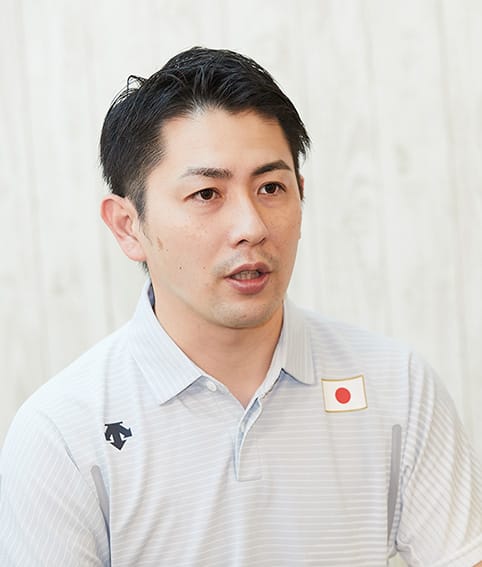
- ITO: How exactly do you use the different types of physiotherapy?
-
Sato: If I want to apply heat to a muscle, I choose ultrasound. For pain relief, I mainly use electrical stimulation. When I want to contract muscles in areas that I can’t reach with my hands, I use it as if I am digging out the muscles with the help of electrical stimulation.
- ITO: Please tell me about the timing of care with physiotherapy.
-
Sato: It’s usually about three to five days before the bout. I don’t use it the day before or on the day of the bout. In the case of sprains or other obviously acute injuries, I might try to alleviate the pain with physiotherapy even right before the bout, but basically, I try to get the athlete into good condition by making adjustments little by little over time.
Using My Experience to Give Back
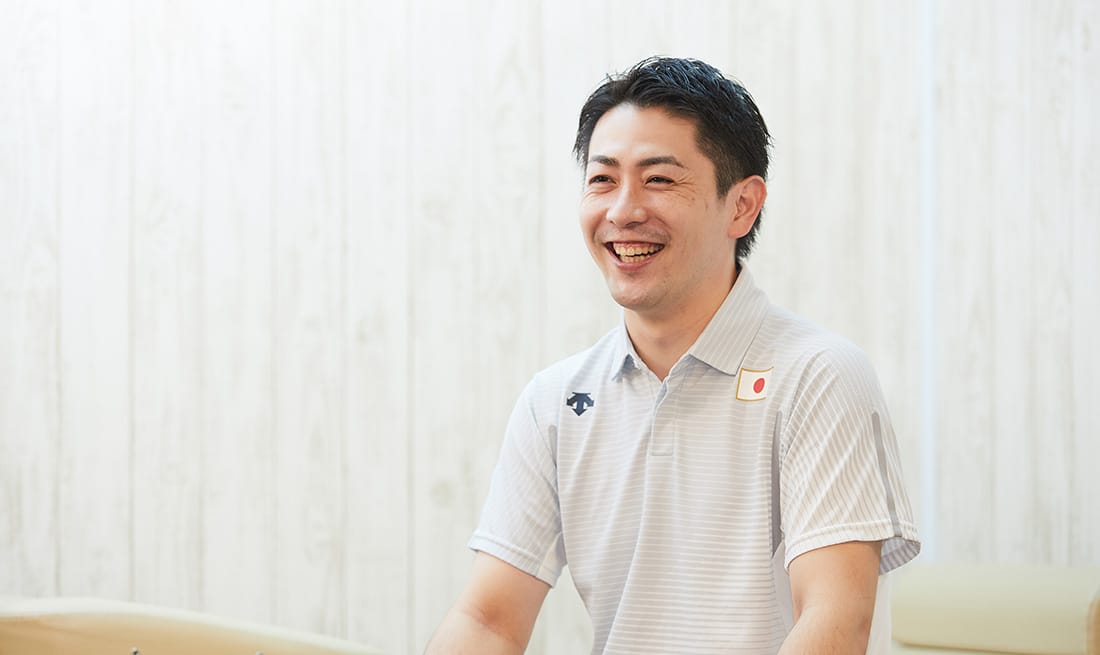
- ITO: What are some of the challenges you face in your work as a trainer?
-
Sato: There’s a lot of baggage to carry. [laughs] The sport involves a lot of overseas travel, so I try to keep my baggage to the minimum, but because this includes various small items like tape for taping, towels, and plastic bags for icing, as well as a portable bed and the treatment equipment, the total can reach around 60 kilograms. Sometimes it’s impossible to take everything with me. It would be great if the treatment devices could be made even smaller and lighter. [laughs]
- ITO: We promise to do everything we possibly can to meet your expectations. [laughs] Finally, tell us about your future goals.
-
Sato: I’ve been fortunate to gain a lot of experience through the support I provide in the sport of fencing. I have also had the opportunity to share some of the best moments in life with these athletes. I feel I’ve been able to grow a lot personally by supporting this group of powerful craftspeople. I’m grateful to all the athletes and the people from the Japanese Fencing Federation.
Looking ahead, I’d like to get involved in a wide range of activities, not just fencing—activities that give me the opportunity to get close to many athletes. I’d also like to focus on education so that I can give back as much as I can of my experience to young, passionate therapists who have a strong desire to be involved in the field of sports.
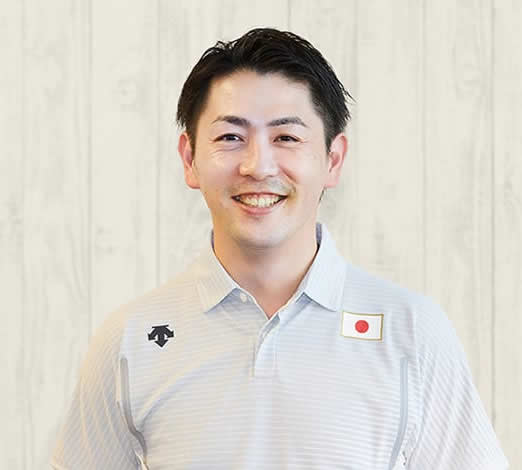
Director of Oaks Acupuncture and Osteopathy Clinic
After graduating from the Department of Judotherapy and Sports Medicine at Ryotokuji University, he completed a program at the Graduate School of Sport Sciences of Waseda University specializing in baseball and physical growth and development. He then worked as a judotherapist at an osteopathic clinic in Saitama Prefecture before joining Oaks Best Fitness in 2015. He opened Oaks Acupuncture and Osteopathy Clinic in 2016. He’s been Executive Director and Store General Manager of the Sato Osteopathic Clinic Group since 2021.
Career: Student Trainer, Hosei University Fencing Club (2009-) / Teaching Assistant, Waseda University Sport Medicine and Science Clinic (2012) / Strength and Conditioning Department, Japanese Fencing Federation (2014) / JOC Strengthening Staff (Fencing: Medical Science Staff) (2016-) / Medical Chief Trainer, Narita High School Baseball Team (2016-) / Trainer, 30th Summer Universiade (2019) / Exclusive Trainer, Japan Fencing Team Men’s Epée (2019-)
